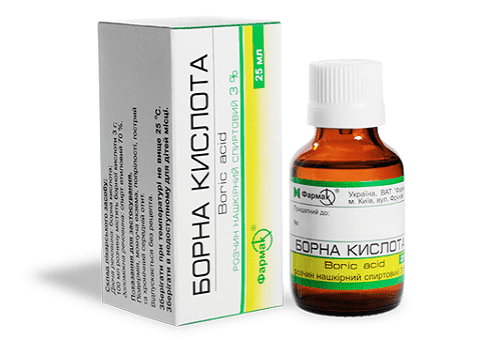Contents:
- Technology of washing black and white things
- How to whiten a white collar or other contrasting elements on a black dress?
- What to do if the black and white dress is shed: Professional and folk remedies for color recovery
Black and white clothing items remain at the peak of fashion year after year. But only if you know how to whiten the snow-white collar on the dress, to emphasize the purity of the color of decorative elements on a black background, you can count on the desired effect. Very expensive things from delicate materials are better to trust professionals.

Some products can be washed and independently, you only need to take into account the specifics of the direction and do everything strictly according to the recommended schemes. There are even techniques to restore a shed thing. They are available, safe and effective at home.
Technology of washing black and white things
If you initially erase, clean and dry black and white things correctly, then in the future, their recovery is not needed. The main rule of the approach is only manual processing. The washing machine does everything quickly, but in this case its use is excluded.

The process of manual processing is also not so simple, it is necessary to observe the following rules:
- In the basin pour warm water, its temperature should not exceed 30 ° C, otherwise you can not expect to save color. In the liquid, we dissolve the gel for washing, after the powder on the black background, divorces often remain.
Tip: Before applying a new remedy, you need to make sure that there are no whitening ingredients in it, they will definitely spoil a particular thing.
- Mechanical treatment of contaminants must be minimized, otherwise the dark paint will pass to white elements. It is better to change the solution for soaking several times, washing the stains out of the fabric.
- After the dress can be washed, you need to fix the color of the product. Vinegar is traditionally used for this. A tablespoon of 9% solution diluted in a liter of cold water. In the resulting composition, the net product is cleaned, gently squeezed and sent to dry.
If after the approach it was not possible to get rid of stains, do not immediately re-wash the garment. It is necessary to choose a stain remover, depending on the color of the contaminated tissue and use it strictly locally.
How to whiten a white collar or other contrasting elements on a black dress?

It is possible to whiten the texture collar on a black dress not only by purposeful influence on a particular part, but also directly during daily washing. If the traditional option of preserving the color with the use of vinegar does not give the desired result, it is worth trying one of the following methods:

- Citric acid. We do the same with it as with vinegar. A tablespoon of the product is bred in a liter of cool water, the crystals must completely dissolve. In the resulting composition, a washed clothes washed. Ideally, this should be done after each wash.
- Profile color stabilizers. If all stains from the surface of the fabric could be washed without a trace, then after rinsing in ordinary water, the thing should be held for a few minutes in a liquid with a small amount of stabilizer. The contrast of colors after such an approach will be restored. This manipulation is suitable for processing products that have to be washed very often.
- Boric acid. It needs to be added directly to the water for soaking instead of the usual detergents. A quarter of a glass of product per standard basin will be more than enough( or a tablespoon of dry powder).

These exposure options will not have the proper effect on the shed thing. Traditional way to wash unaesthetic traces and divorce, too, will not work. But, before you turn to professionals for help, you can try several options for restoring the product at home.
What to do if the black and white dress is shed: professional and folk color restoration tools
Given the fact that a snow-white collar or other light elements will darken rather than white lines appear on a black background, the following should be done:
- The dress can be completely soaked in the stain remover. It should be universal, without bleaching components based on chlorine. Best for this purpose is suitable "Vanish".In the bowl, the product is diluted according to the instructions. Liquids should be so much that the product is soaked, but not soaked in the composition. The thing is soaked, the remains of the mixture are drained and waiting for half an hour. After that, rinse the cloth and dry it. You do not need to wash clothes!
- White elements on a black background will quickly recover if using oxygen bleach. It should be the most mild and delicate composition. A quarter of the glass of the product is bred in a basin of water, soak the dress thoroughly. Leave it in the liquid for a day. After this, the shed thing should be washed as usual and dried.
- Mix equal quantities of ammonia and dishwashing detergent. Soak the resulting composition of a damaged object and wait 40 minutes. Then carefully rinse the object, several times changing the water.
- No less effective is the people's approach, which allows not only to restore the shed thing, but also to fix its color. To begin with, the garment needs to be washed from the soiling and for half an hour in a soapy solution with the addition of a glass of strong green tea. Then we take out the cloth from the composition and sprinkle the problem spots with salt. We wait a quarter of an hour and rinse the cloth with a lot of cool water. Re-wash the product is not necessary, it will have to do only if the violation of the technique of manipulation and the appearance of yellow stains on the surface of the material. This happens if you mix up green tea and white.
Despite the seeming simplicity of manipulation, you must strictly adhere to the recommended dosages and sequence of actions. If the result does not satisfy the procedure, it is worth trying a different approach, but it is strictly recommended not to increase the concentration of the solutions used. Some chemical processes can cause such consequences that even professionals will not be able to wash stubborn stains on contrasting tissues.



